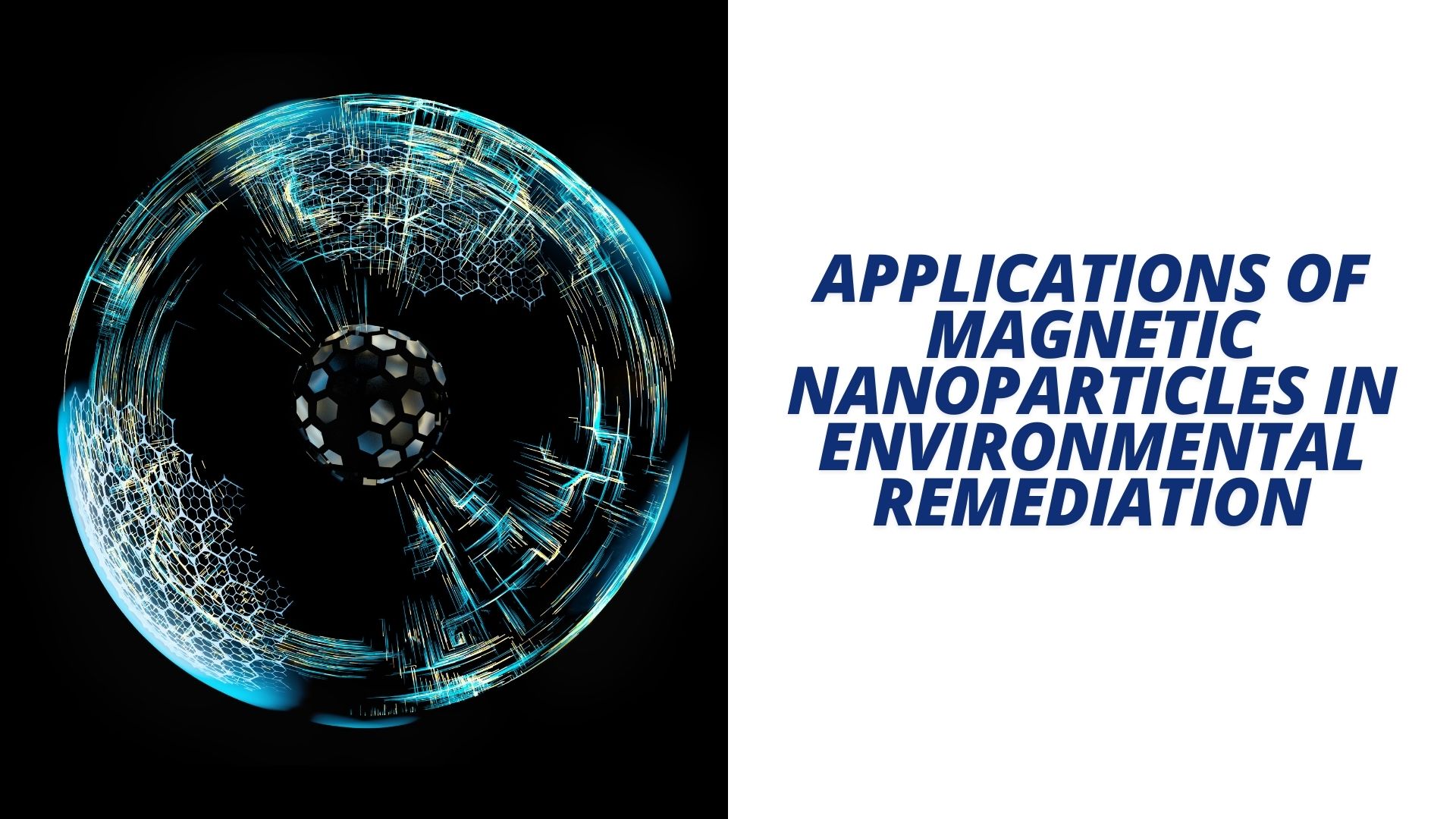Environmental remediation is one of the most pressing challenges of the modern world. With increasing levels of pollution in air, water, and soil, it is essential to develop effective technologies that can address these environmental issues. Among the most promising innovations in this field are magnetic nanoparticles, which have garnered significant attention for their ability to clean up various pollutants efficiently. This article explores the diverse applications of magnetic nanoparticles in environmental remediation, including their role in water treatment, soil decontamination, and air purification, and highlights the advantages and challenges associated with their use.
What Are Magnetic Nanoparticles?
Magnetic nanoparticles (MNPs) are particles with sizes typically ranging from 1 to 100 nanometers that exhibit magnetic properties. These nanoparticles are often made from materials like iron oxide (Fe3O4 and Fe2O3), cobalt, and nickel, which are known for their superparamagnetic properties. Superparamagnetism is a phenomenon where nanoparticles become magnetized in the presence of an external magnetic field but lose their magnetization once the field is removed. This makes them highly suitable for environmental remediation processes, as they can be easily manipulated with magnetic fields.
Magnetic nanoparticles have a high surface area relative to their volume, which allows them to interact with pollutants effectively. Additionally, their surface can be functionalized with various chemical groups, further enhancing their ability to target specific contaminants.
Applications in Water Treatment
Water pollution is a significant environmental issue that affects millions of people worldwide. Contaminants such as heavy metals, organic pollutants, and pathogens pose serious threats to human health and the ecosystem. Magnetic nanoparticles have proven to be highly effective in addressing these pollutants in water.
Heavy Metal Removal
Heavy metals like lead, mercury, arsenic, and cadmium are toxic even at low concentrations and are commonly found in industrial wastewater. Magnetic nanoparticles, especially those made from iron oxide, can adsorb heavy metals due to their large surface area and ability to form bonds with metal ions. By functionalizing these nanoparticles with chelating agents, they can selectively bind to specific metal ions, making them ideal for removing these pollutants from contaminated water.
Once the magnetic nanoparticles are saturated with contaminants, they can be easily separated from the water using a magnetic field, making the process both efficient and cost-effective. This method reduces the need for additional chemicals and minimizes the production of secondary waste.
Removal of Organic Pollutants
In addition to heavy metals, organic pollutants like pesticides, dyes, and pharmaceuticals are common in wastewater. Magnetic nanoparticles can be functionalized with various organic groups to attract and degrade these pollutants. For example, nanoparticles can be coated with activated carbon or other adsorbents to increase their efficiency in removing organic contaminants. The functionalization process allows the nanoparticles to break down or adsorb the pollutants, which can then be removed through magnetic separation.
Pathogen Removal
Waterborne pathogens, such as bacteria, viruses, and protozoa, are responsible for numerous diseases worldwide. Magnetic nanoparticles, when coated with antimicrobial agents, can be used to capture and neutralize these pathogens. The magnetic properties allow for easy recovery and reuse of the nanoparticles, reducing the cost and waste associated with traditional disinfection methods.
Soil Decontamination
Soil contamination due to industrial activities, agricultural practices, and waste disposal is a major environmental concern. Magnetic nanoparticles have shown potential in remediating contaminated soils, particularly in the removal of heavy metals and organic compounds.
Heavy Metal Contamination in Soil
Similar to their use in water treatment, magnetic nanoparticles can be employed to remove heavy metals from soils. By mixing the contaminated soil with magnetic nanoparticles, the particles can adsorb the metals, and the contaminated soil can be treated effectively. Afterward, the nanoparticles can be easily recovered using a magnetic field.
This technique offers several advantages over traditional soil remediation methods, such as excavation or chemical treatment. It is more cost-effective, requires less energy, and minimizes soil disruption.
Removal of Organic Contaminants
Soils contaminated with pesticides, hydrocarbons, and other organic compounds can be cleaned using magnetic nanoparticles. Nanoparticles can be designed to adsorb or degrade specific organic pollutants. For example, magnetic nanoparticles coated with enzymes can break down toxic organic compounds into less harmful substances. The ability to target specific contaminants in soil while leaving the surrounding environment untouched makes this approach highly efficient.
Air Purification
Air pollution is another critical environmental issue that affects human health and the climate. Magnetic nanoparticles are increasingly being explored for their ability to remove airborne pollutants, such as particulate matter (PM), volatile organic compounds (VOCs), and toxic gases.
Particulate Matter Filtration
Fine particulate matter (PM2.5) is a major air pollutant that can cause respiratory problems and other health issues. Magnetic nanoparticles, particularly those made from iron oxide, have been incorporated into filtration systems to remove particulate matter from the air. These nanoparticles can be embedded into filters, where they act as magnets, attracting and trapping particles from the air.
Removal of Volatile Organic Compounds (VOCs)
VOCs are emitted by various industrial processes, paints, and solvents and can contribute to smog formation and respiratory issues. Magnetic nanoparticles coated with specific adsorbents can be used to trap and neutralize these compounds. Once the nanoparticles are saturated, they can be collected and regenerated using magnetic separation, making this process more sustainable than conventional VOC removal methods.
Advantages of Using Magnetic Nanoparticles in Environmental Remediation
-
Efficiency and Selectivity: Magnetic nanoparticles can be tailored to target specific pollutants, making them highly efficient and selective in environmental remediation.
-
Reusability: Since magnetic nanoparticles can be easily separated using magnetic fields, they can be reused multiple times, reducing operational costs and environmental impact.
-
Minimal Chemical Use: Magnetic nanoparticles reduce the need for harsh chemicals, making remediation processes more environmentally friendly.
-
Cost-Effectiveness: Magnetic separation is a low-cost and energy-efficient method compared to traditional techniques such as chemical treatments or thermal remediation.
Challenges and Limitations
Despite their many advantages, the use of magnetic nanoparticles in environmental remediation is not without challenges:
-
Environmental Impact of Nanoparticles: The long-term environmental and health effects of releasing nanoparticles into the ecosystem are not fully understood. Research is ongoing to ensure that magnetic nanoparticles do not pose a risk to wildlife or human health.
-
Scalability: While magnetic nanoparticles have shown promise in laboratory-scale studies, scaling up these processes for large-scale remediation remains a challenge.
-
Cost of Production: The synthesis of magnetic nanoparticles can be costly, which may limit their widespread application. However, ongoing research is focused on developing more cost-effective production methods.
Future Directions
The future of magnetic nanoparticles in environmental remediation looks promising. Researchers are continuously developing new types of magnetic nanoparticles with enhanced properties, such as greater surface areas, higher adsorption capacities, and improved degradation abilities. Additionally, integrating magnetic nanoparticles with other nanomaterials or advanced technologies like bio-remediation or photocatalysis could further enhance their effectiveness in environmental cleanup.
Furthermore, increasing our understanding of the environmental fate and potential toxicity of nanoparticles will help address safety concerns, ensuring that these innovative materials can be safely applied on a large scale.
Conclusion
Magnetic nanoparticles are a powerful tool in the fight against pollution, offering efficient, cost-effective, and environmentally friendly solutions for water, soil, and air purification. Their versatility and ease of manipulation make them a promising option for environmental remediation, and as research continues, their applications are likely to expand. By harnessing the power of nanotechnology, we can move closer to a cleaner, safer environment for future generations.





